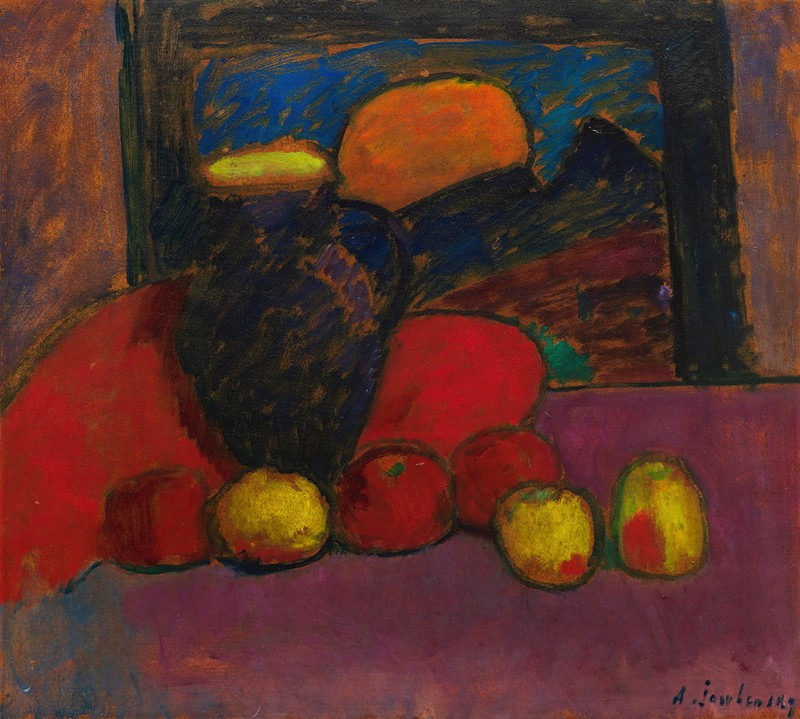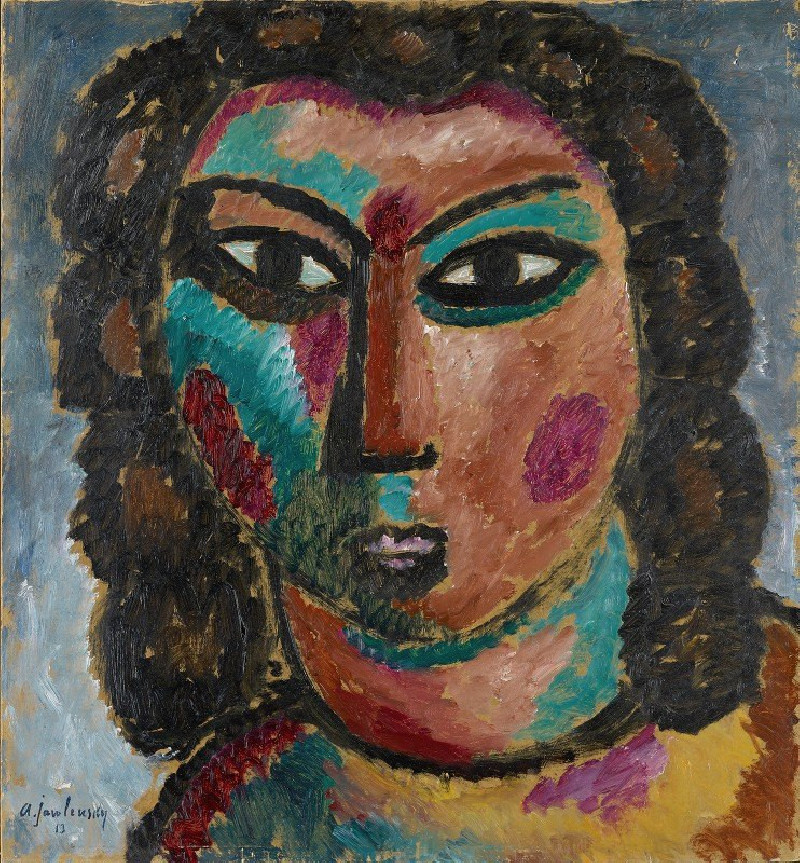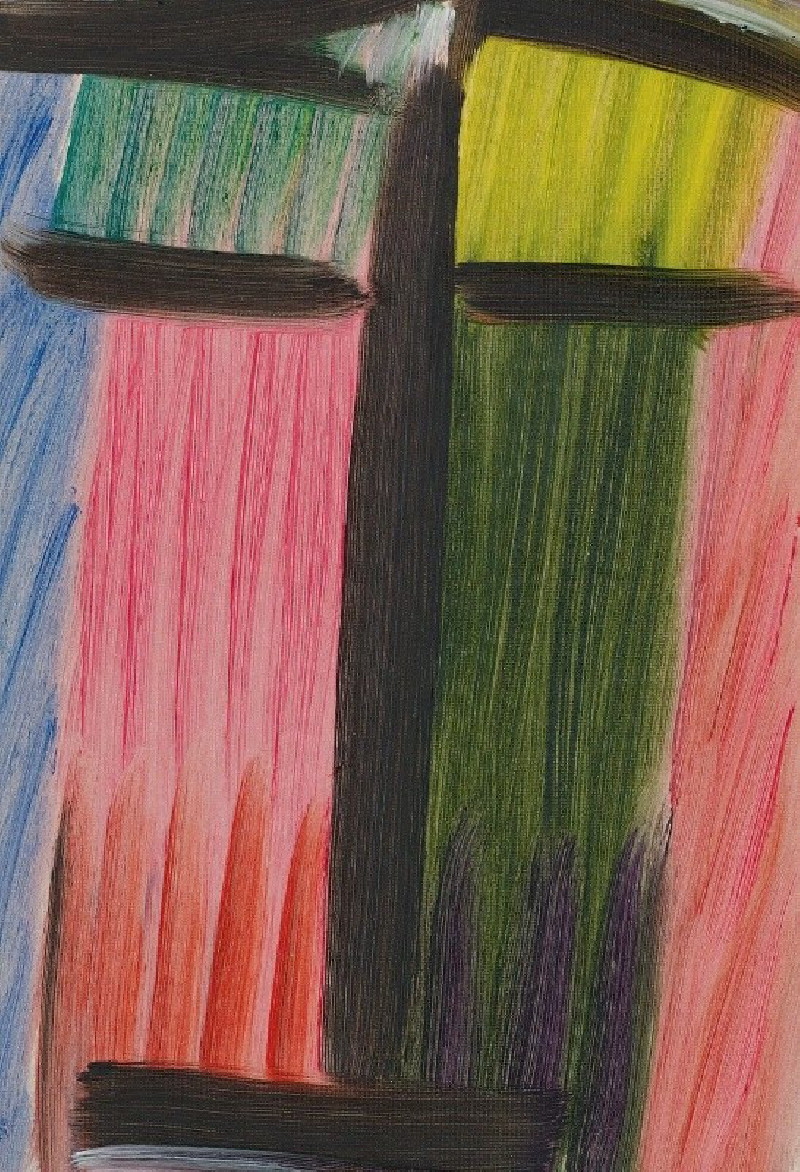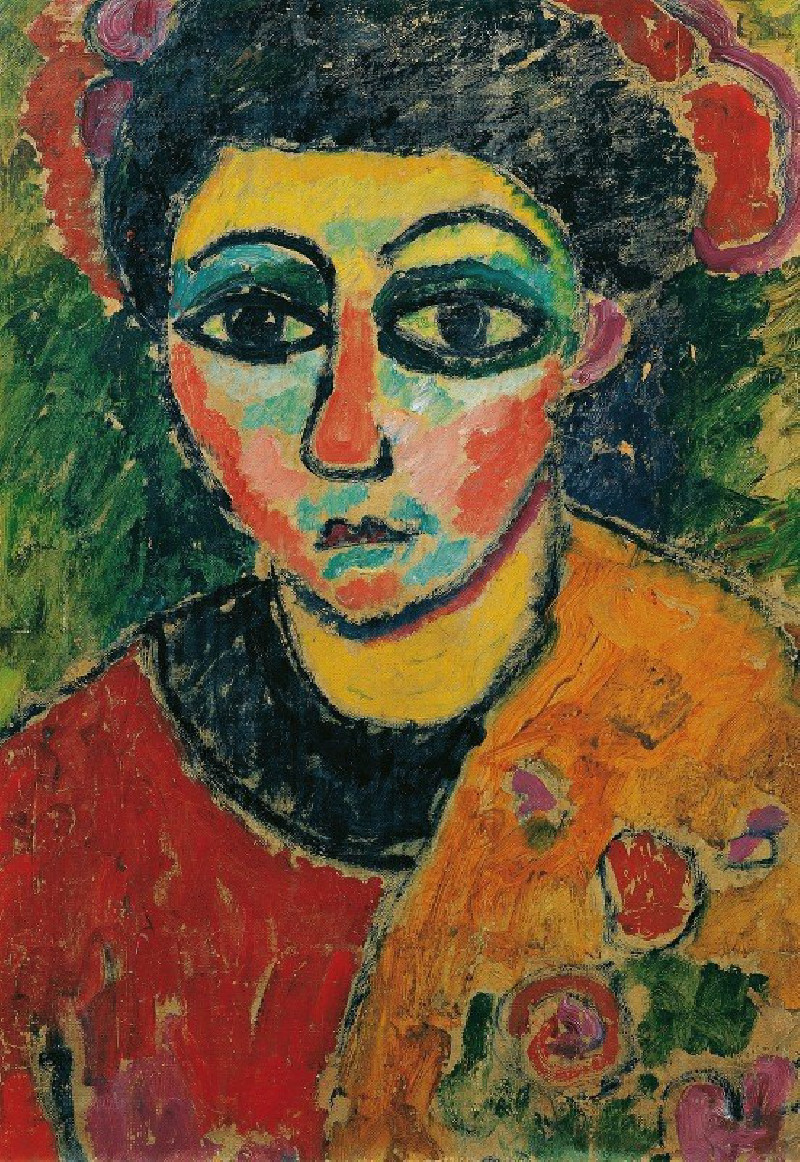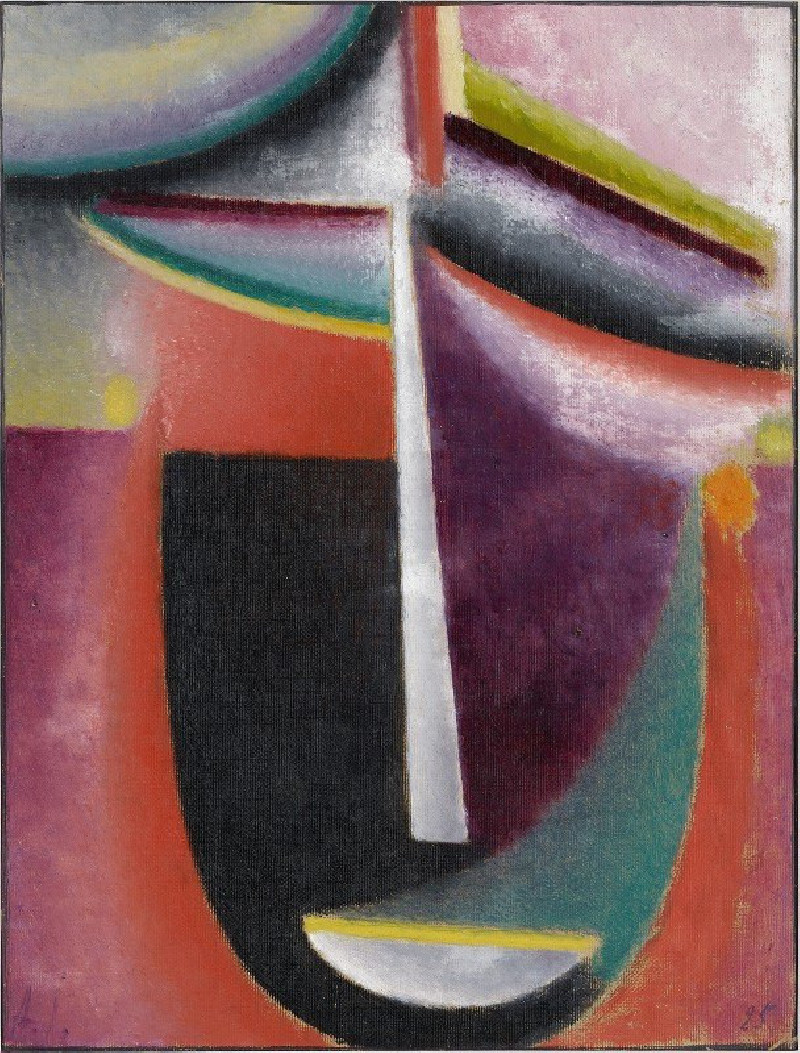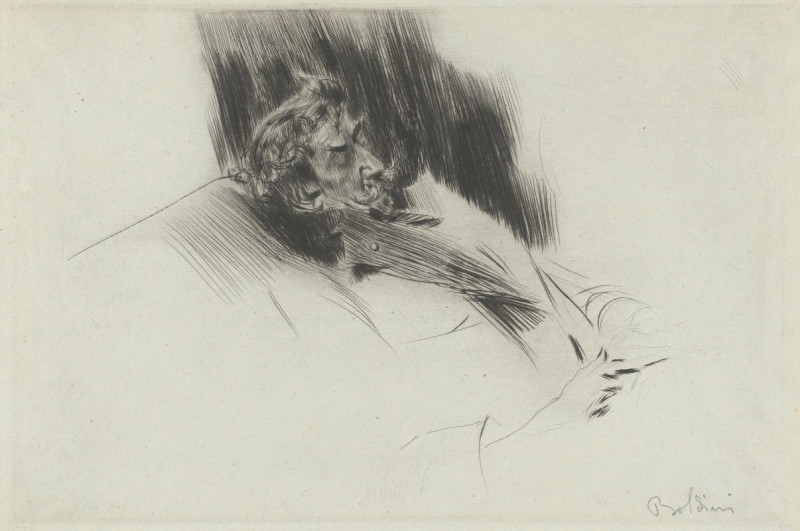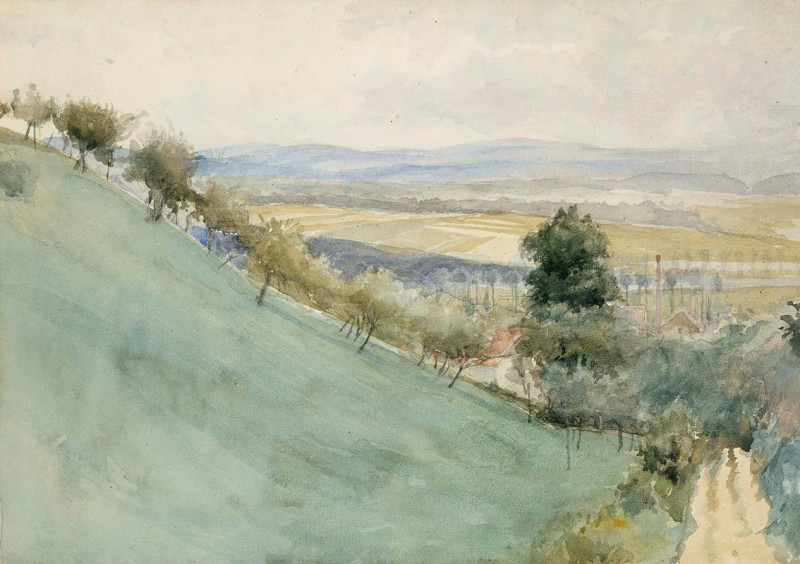Stillleben (1910)
Technique: Giclée quality print
Recommended by our customers
More about this artwork
"Stillleben" (1910) by Alexej von Jawlensky captures a vivid arrangement of everyday objects in a unique and striking composition. This still life composition exhibits Jawlensky's transformation from conventional representation to a more expressive style which characterizes his later works.In the painting, bold colors dominate, with a prominent display of deep blues, fiery reds, and glowing yellows, suggesting both texture and form while even imparting emotional content. The painting presents a jug and fruit—elements typically found in traditional still lifes—but Jawlensky's approach is anything but traditional. The objects are rendered in simplified forms, almost abstract, with the vibrant colors swirling around them, emphasizing their presence against the darkened background.At the top left corner of the painting, what appears to be a small, stylized landscape or figural representation contributes an additional layer of depth and intrigue. This insertion deviates from regular still life expectations and is indicative of Jawlensky's involvement with the metaphorical and spiritual in art, signifying his step towards abstraction.This piece, both impactful and intimate, offers a glimpse into the evolution of Jawlensky's art from representational to expressive forms, making it a vital work for those interested in the developments of early 20th-century abstraction.
Delivery
Returns
Alexej Georgewitsch von Jawlensky (13 March 1864 – 15 March 1941) was a Russian expressionist painter active in Germany. He was a key member of the New Munich Artist's Association (Neue Künstlervereinigung München), Der Blaue Reiter (The Blue Rider) group and later the Die Blaue Vier (The Blue Four).

